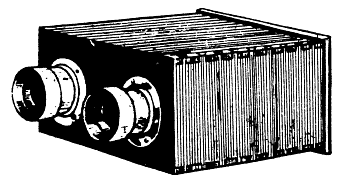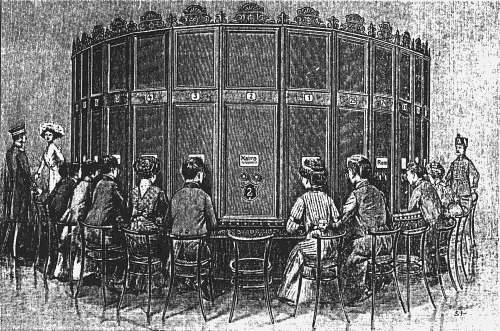


| 2. A LITTLE HISTORY |
The report that the ancient Greeks already knew of stereoscopic interaction have been declared as fairy tales. The same is true for the report that Leonardo da Vinci drew stereo pictures. These incorrect statements stem almost exclusively from the Englishman David Brewster, who wrote a lot about stereoscopic concerns.
The true discoverer of stereoscopy is the well known English physicist Charles Wheatstone, who also invented the Wheatstone bridge. On June 21, 1833 he lectured to the Royal Society in London on his discoveries concerning stereeoscopic phenomena. This lecture was also printed and became generally known. He supported his accidental discovery, which resulted from acoustical experiments, with drawn pictures, and developed the first stereoscopic viewer, which worked with mirrors.
On August 19, 1839, the Frenchman Daguerre
disclosed his method of generating permanent photographic pictures. These
were taken with the camera obscura, invented by the Frenchman Niepce in
1822. Thereby it became possible not only to draw stereograms, but to photograph
them as well.

|
|
|
Many early photographers flooded in this new field. But since only a few were informed of the basics, much nonsense resulted. It was already noted in Liesegang's "Photographisches Archiv" in 1869 that incorrectly photographed stereograms cause headaches. The English physicist David Brewster improved the stereoscope and in 1849 the first true stereo camera with two lenses (fig. 2.1) was built. In 1855 the Frenchman Barnard invented the first frontal stereo attachment constructed with mirrors for single lens cameras. Later, the Englishman Brown improved on his design. The stereo viewer (stereoscope) was further developed by the Germans, Helmholtz and Pulfrich.
The stereo craze of that time had already
diminished by 1900 and was only stimulated by the so-called Kaiser-Panorama
of Fuhrmann (fig. 2.2) from Berlin for a short period of time. This consisted
of a set of many stereo viewers situated side by side in a circle. The
stereo slides rotated step-wise on a drum at a certain speed from one viewer
to the next.

|
|
|
Only after 1918 did stereo photography become once again popular. Stereo cameras in format 6x13 cm and 45 x 107 mm came into existence. The best known were the Vérascope from Jules Richard, the Heidoscope and Rolleidoscope from Franke & Heidecke, as well as the Stereoflektoscope from Voigtländer.
After 35 mm film with the miniature format, and especially color slide film had made an appearance, a new wave of stereo photography came into existence using the small cameras with a format of 24x23 mm, e.g., the Stereo-Realist, the Kodak Stereo, the Edixa and the Iloca. Cameras with a format of 24x29 mm were, for example the Belplasca and the Vérascope f40.
In addition, interchangeable twin stereo lenses were developed for the Contax and Leica along with the supplementary mirror- and prism-attachments. Henceforth one could make stereo exposures with portable cameras with a format of 24x36 mm. This resulted in two single views with a vertical format of 18x24 mm. Stereo attachments were also built for single lens cameras: so-called beamsplitters which likewise used the horizontal format of 24x36 mm divided into two single frames in a vertical format of 18 x 24 mm.
In the year 1936 three approaches were discovered for the economical and industrial production of polarization filters (Bernauer, Kaesemann, Land and Mahler). Thus, picture separation became possible even in color photographs. With their help, the amateur could project his stereo slides onto a silver projection screen. This, of course, generated a lot of interest, and led to the construction of true stereo projectors with two lenses.
As one can see, a colorful past. Unfortunately,
3-D projectors like used 3-D cameras, have almost completely disappeared
from the market. We must then start anew with Adam and Eve, namely with
Wheatstone and Brewster. However, we do have the experience of over 100
years of stereo photography at our disposal.
| Previous
Chapter: What is Stereo or 3D? |
Contents |
Next
Chapter: General Requirements for the Stereo Picture |
 |
|

| Back to the Services Page |
